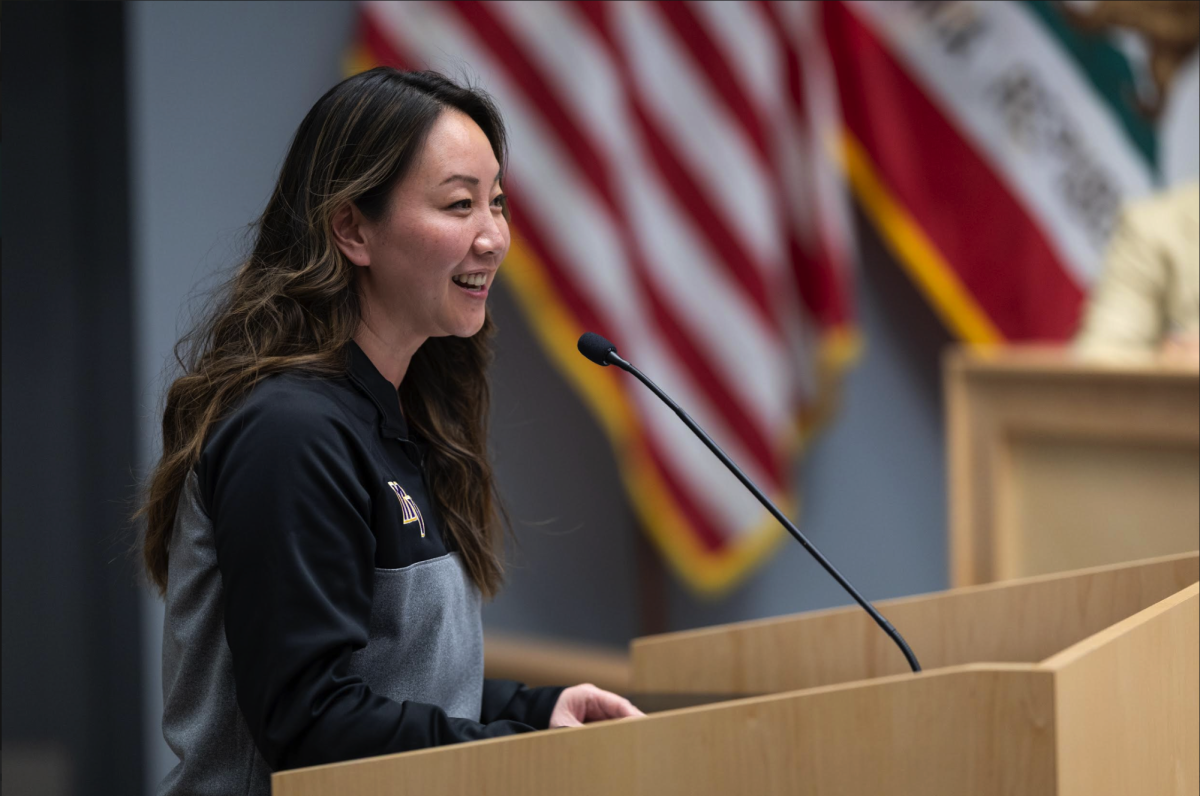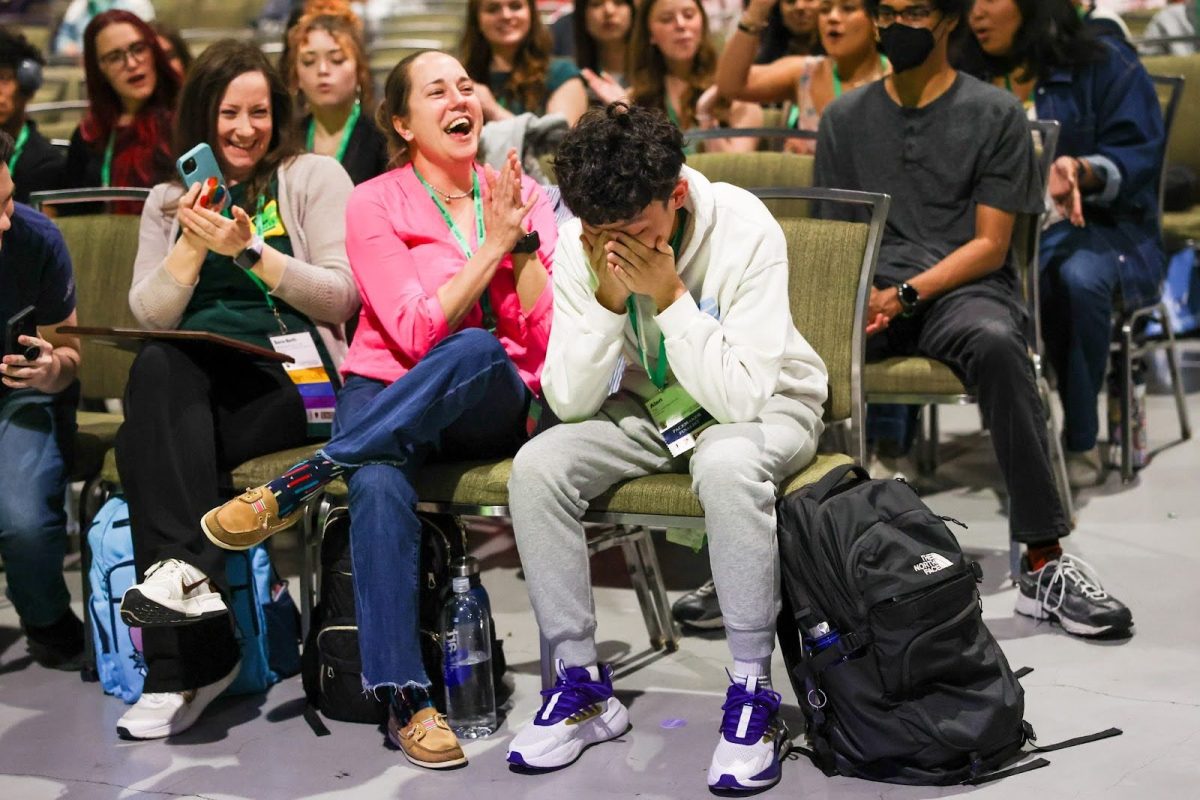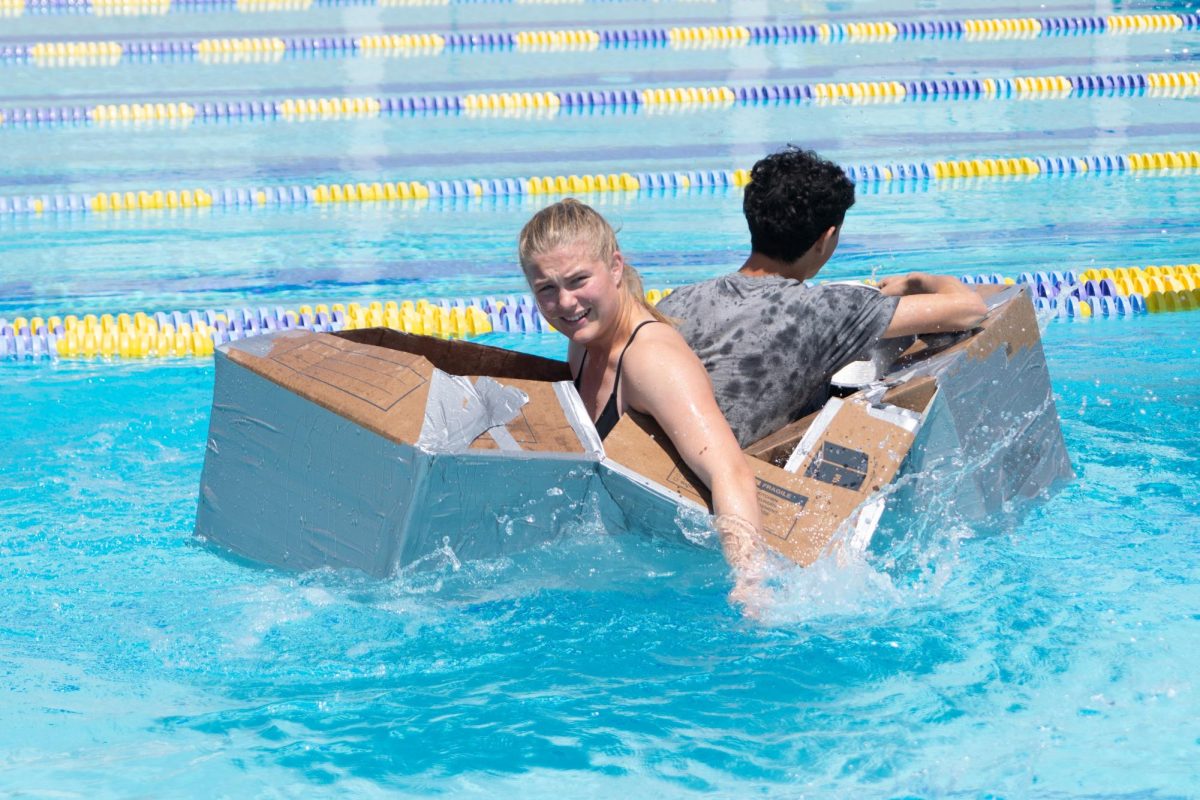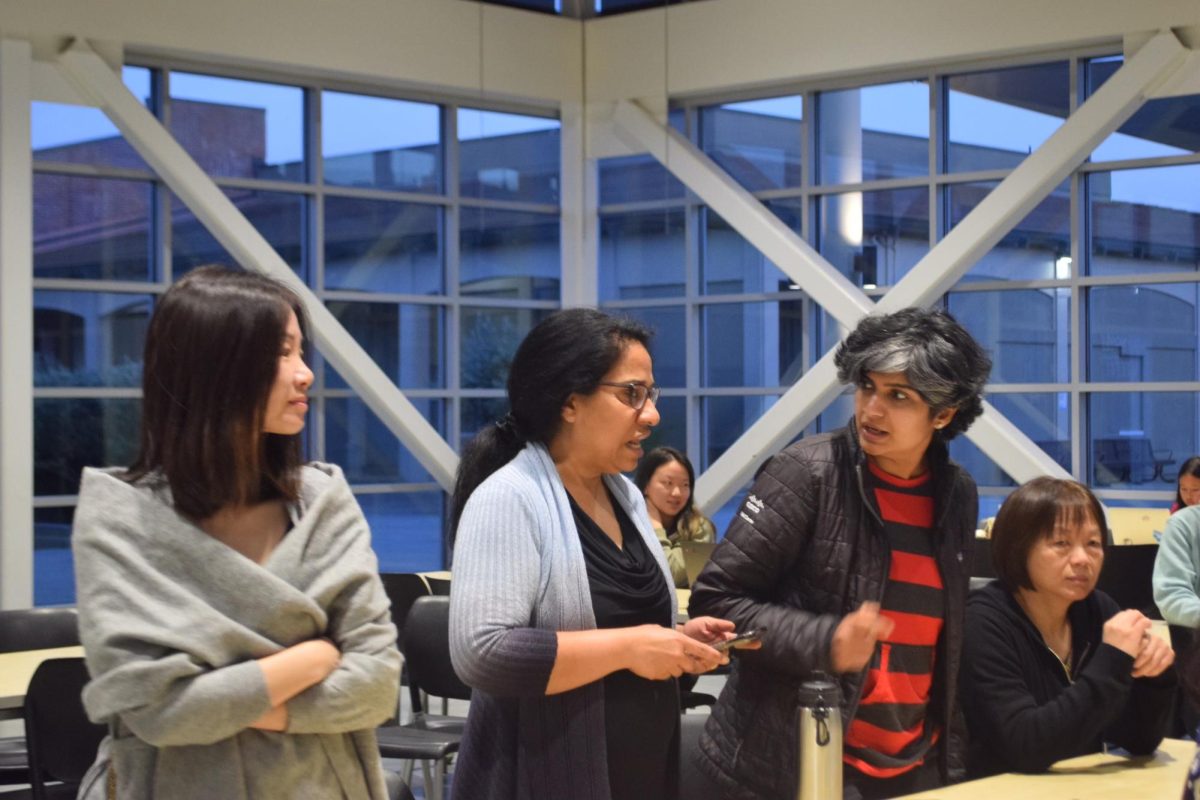They were not there for their love of soccer. Nor were they there for the thrill of exploring someplace new, empty and unconquered. They were artists, and their attention was all for the quiet, little things: across a wild stretch of grass and earth torn by weeds and the occasional bird, where there sat a stout beige wall that had drowned in faded graffiti, the Avaya Stadium stood, a small, metal beauty of sculpted curves. They were architects, and they were there for the structure itself.
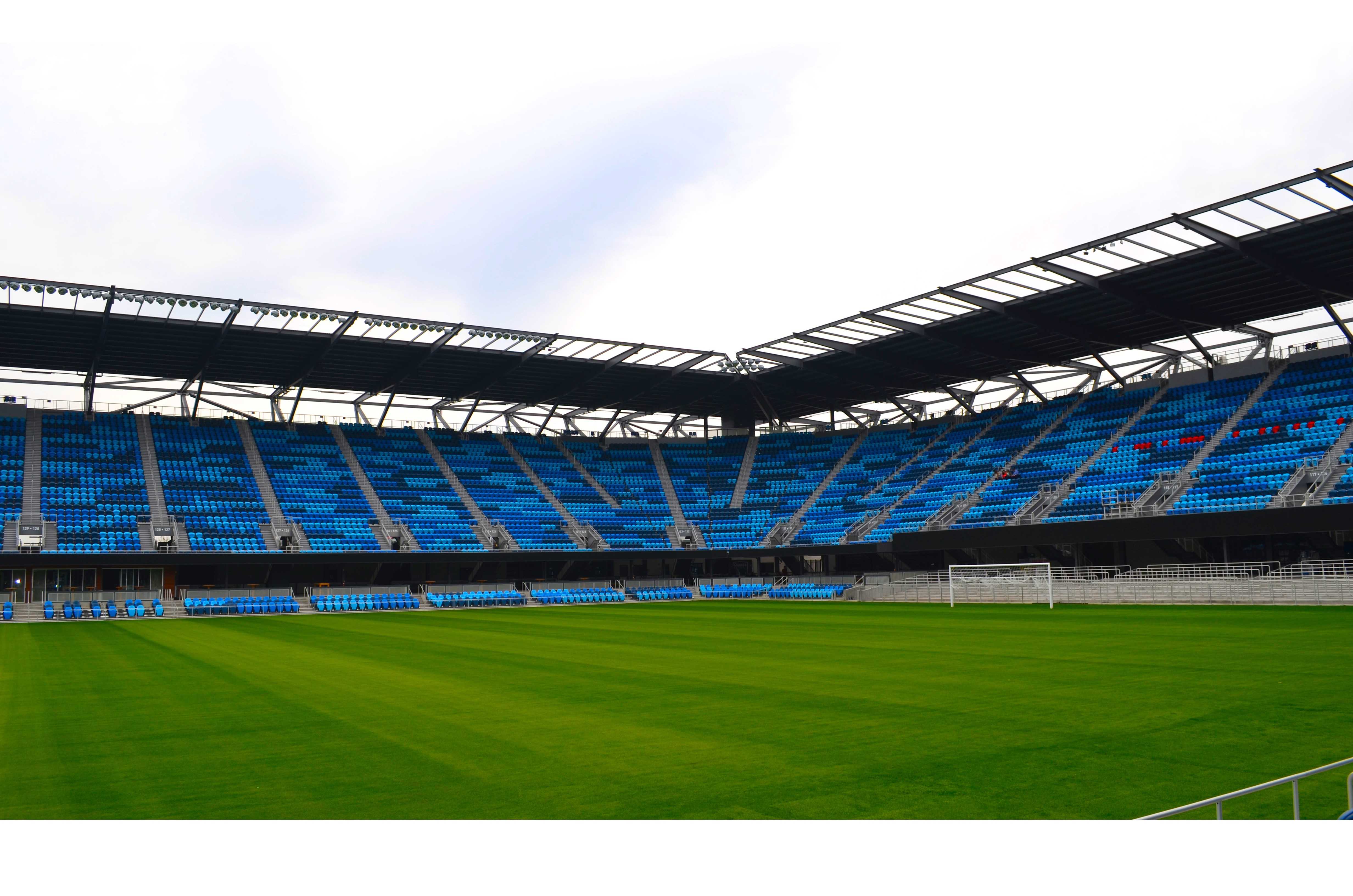
Members of MV Architects visited and toured the Avaya Stadium in San Jose, home of the Earthquakes, Tuesday, March 10, after school. The event had been organized by Architecture, Construction and Engineering, a program which mentors high school students and encourages interest in design and construction.
“We wanted to connect architecture to things people can resonate with and be interested in, and sports is one of those things,” founder and co-president junior Yeeling Tse said. “The Avaya Stadium was just completed, so we thought it would be interesting to get a first look at the stadium and its architecture before its debut.”
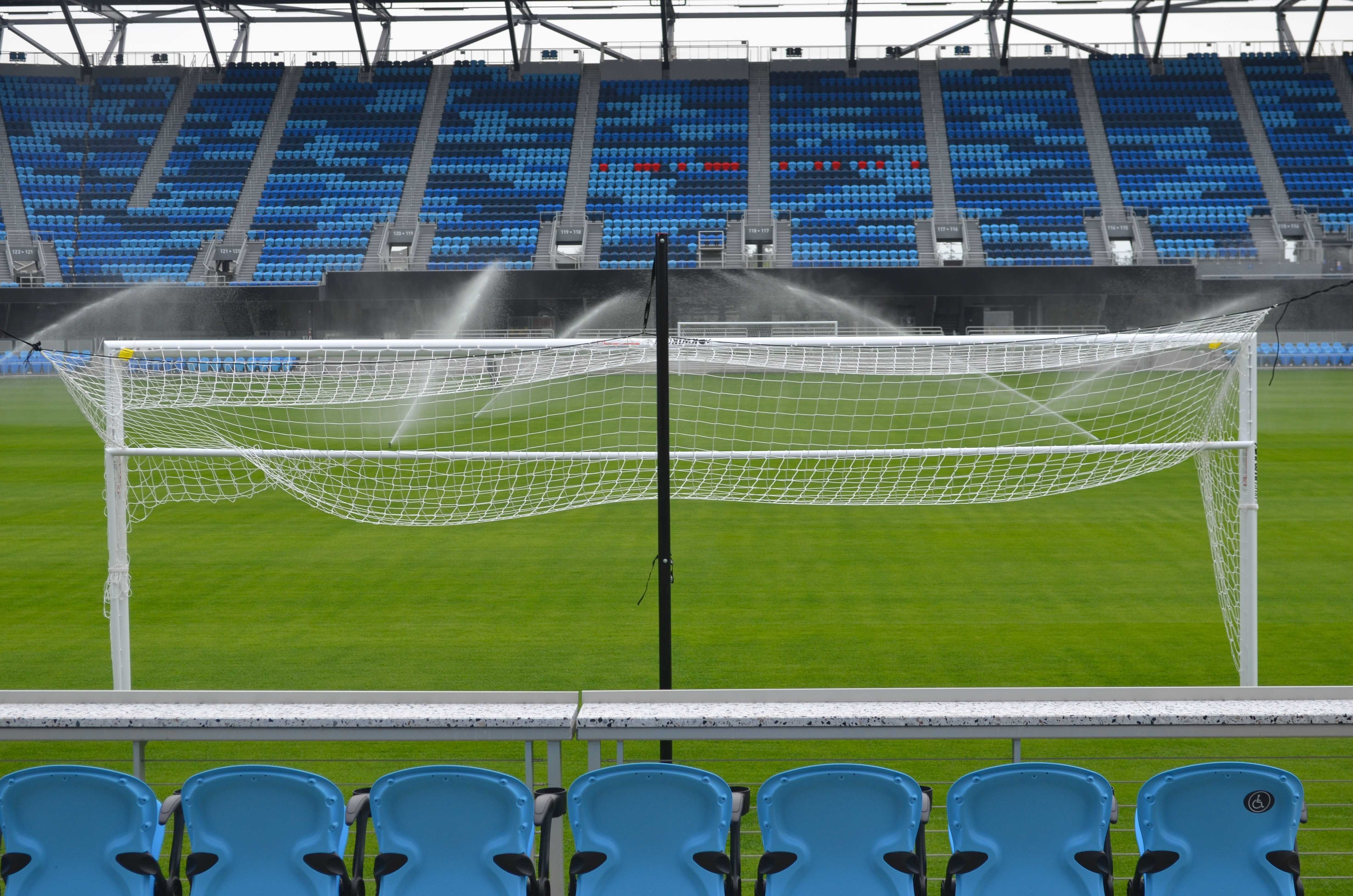
They had climbed from a maroon SUV and meandered through the stadium, stopping by the concessions stand to keep a napkin as a souvenir and gazing at the edge of the field as the airplanes took off into the gray skies. As they stood, slightly disappointed by the size and ordinariness of that little stadium near an aviation company, a Chevron gas station and open land of nothingness and nowhere, someone commented: “It’s okay; it has a majestic view of the airport.” They all laughed.
However, once the tour had truly begun and a guide led them through the stadium, the MV Architects members climbed the narrow staircases up to the top of the stadium and explored the press box, where the announcers issued their fervent commentary into booming speakers; crossed the open corridors lined by glass and wood suites to sit in the control room where the scoreboards are monitored; and touched the players’ seats and playing field.
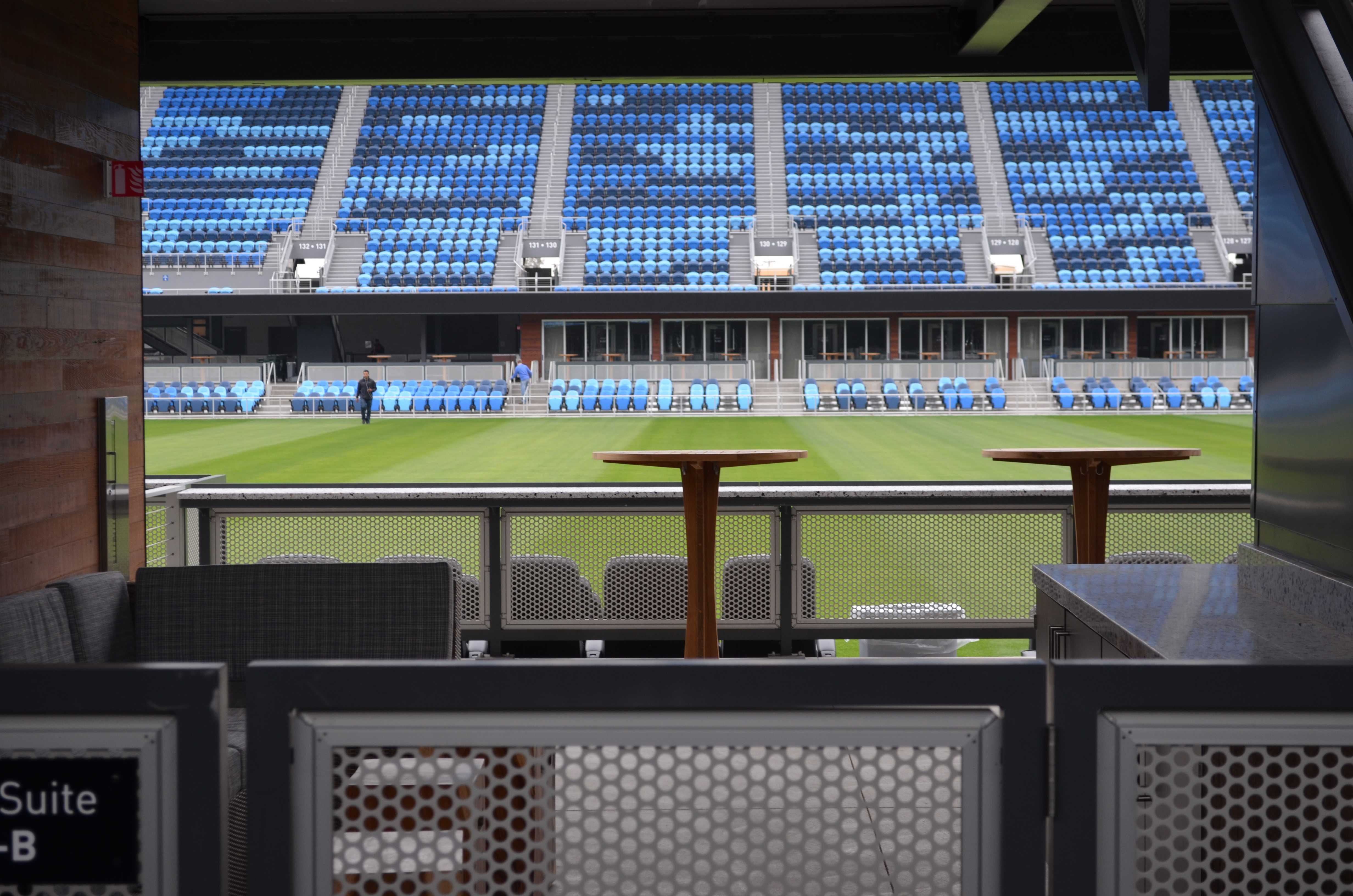
Freshman Aurum Kathuria, a member of MV Architects, was delighted.
“I’m a fan of the Earthquakes, and I’ve never been on a professional playing field,” Kathuria said, “so [when I had the chance] I ran to touch the grass.”




